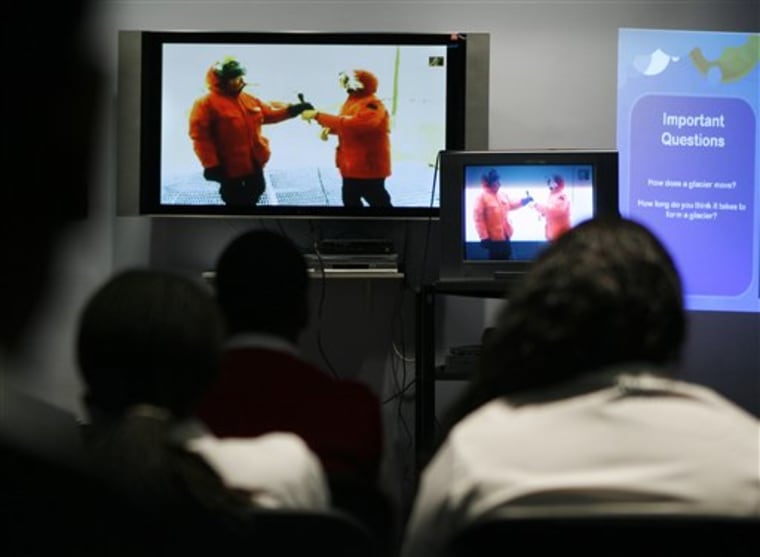Global warming was the topic, but one eighth-grader from Harlem posed a question that his teacher could answer with firsthand knowledge:
"Would it be easy for a kid to live in Antarctica?"
Science teacher Shakira Petit stamped her feet for warmth in the minus 7 degree weather of her surroundings and shook her head.
"There are no children here. It's all scientists," she said during a videoconference Tuesday with her students and others participating in a program sponsored by the New York-based nonprofit Global Nomads Group.
Petit, who teaches at the Promise Academy charter school, is spending two months in Antarctica to conduct climate change research with The Offshore New Harbor Project in Antarctica. She's participating in the research expedition through Global Nomads.
Bundled in a hooded parka, boots and gloves, Petit told the students about icebergs and rising sea levels. She also pointed out various features of Antarctica's McMurdo Station, such as supply buildings, trucks with big snow tires and a cross in memory of explorer Robert F. Scott.
Among the questions students asked: "What causes shapes and colors in an iceberg?" "How do you judge the age of the ice?" and "How thick is the ice you're standing on?"
Studying ancient sediment
Petit co-taught the class with Kirsty Tinto, a graduate student from New Zealand. The women are part of a group of researchers seeking to further scientific knowledge of global warming by studying sediments deposited in Antarctica some 34 million years ago when there were dramatic global climate changes.
Students from schools in Newark, Del., Davie, Fla., Virginia Beach, Va., and Douglass, Kan., also linked into the videoconference.
Terry Culver, executive director of Global Nomads, said 10 schools take part in two weekly video sessions.
"Longer term we hope that this program excites people about science either to make it part of their common knowledge or to think of field research science as a career choice," Culver said.
Cynthia Knupp, a teacher at Indian Ridge Middle School in Florida, one of the schools in Tuesday's videoconference, said she is a believer.
"I can teach in the classroom all the content I have to, but for them to be able to actually see science in the field is amazing," she said. "My kids are thrilled. They think that they are real special because they get to be involved."
Other travels outside the book
Gayle Hartigan, the computer resource specialist at Tallwood High School in Virginia Beach, said that in addition to the Antarctica project, Global Nomads' videoconferences have allowed her students to talk to South African Archbishop Desmond Tutu and victims of the genocide in Rwanda.
"When you just talk about it out of the book it's not as powerful as when you get to talk to the people who are doing it and living it," Hartigan said.
Back at Promise Academy, 12-year-old Catherine Casado watched Petit with rapt attention.
"We're here videoconferencing with my teacher who's in Antarctica," she said. "And that's kind of amazing."
